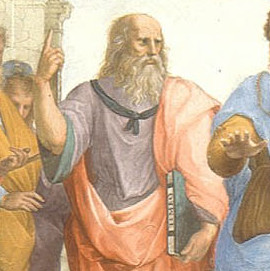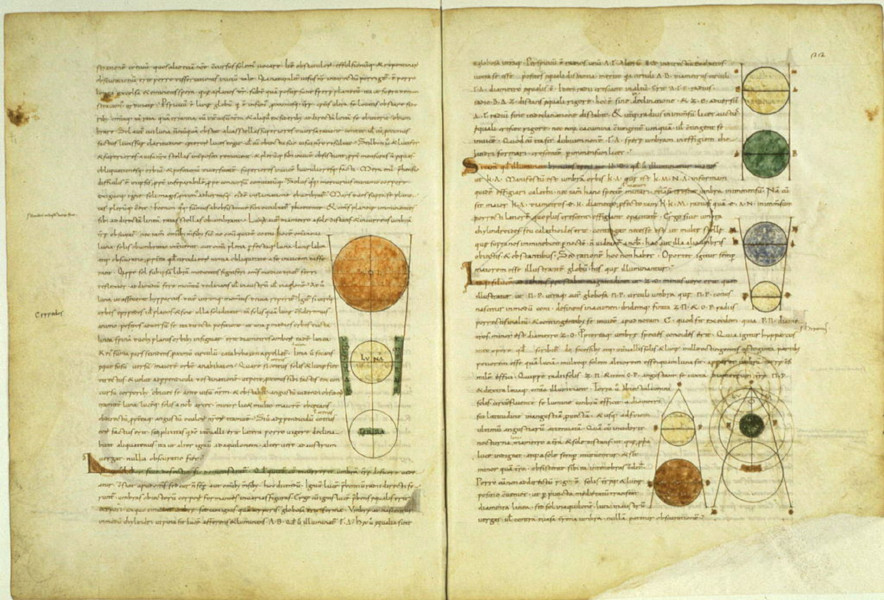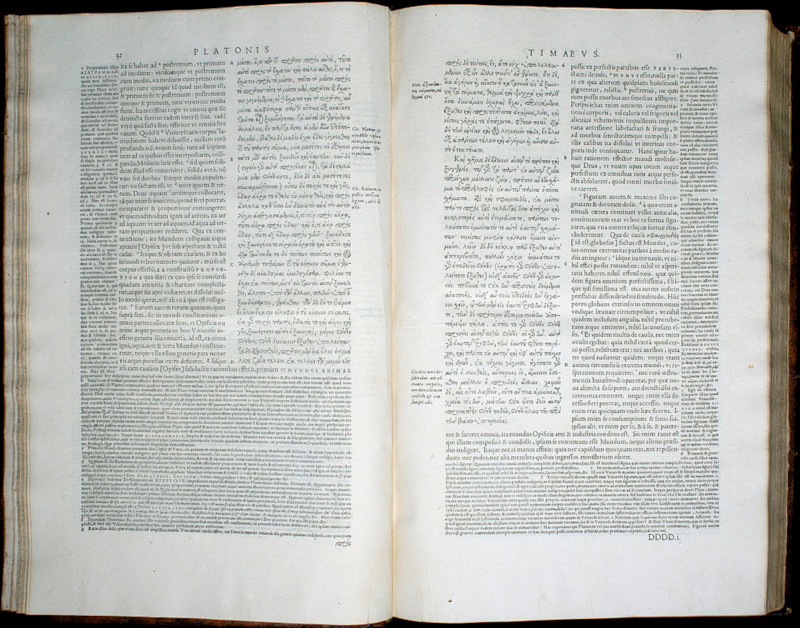Timaeus (Book) AKA Τίμαιος

Timaeus
360 BC
AKA Τίμαιος
Socrates wants to hear about how his ideal state will interact with other states. Critias begins to tell the story of how Athens used to be an ideal state but waged war on Atlantis. Critias then defers to Timaeus to tell the part of the story from the origin of the universe to man.
Timaeus goes on to explain much of Plato's cosmology and religious views
Timaeus defines the so-called Platonic solids, associating the four classical elements, and a fifth element which made up the heavens:
- cube → earth
- octahedron → air
- icosahedron → water
- tetrahedron → fire
- dodecahedron → heavens
Socrates locates the parts of the soul within the human body:
- Reason → head
- spirit → top third of the torso
- appetite → middle third of the torso, down to the navel
Events (1)
for 
Attachments
Latin Timaeus translation Medieval manuscript of Calcidius' Latin translation of Plato's Timaeus. In the late sixteenth century, this manuscript belonged to Leiden University professor Daniel Heinsius who gave it to his son Nicholas. Nicholas, whose signature appears on the manuscript, was the librarian of Queen Christina of Sweden, whose collection came to the Vatican Library after her death.
1578 Stephanus edition of Plato Volume 3, pp. 32–33, of the 1578 Stephanus edition of Plato, showing a passage of Timaeus with the Latin translation and notes of Jean de Serres
Greek
math
philosophy










